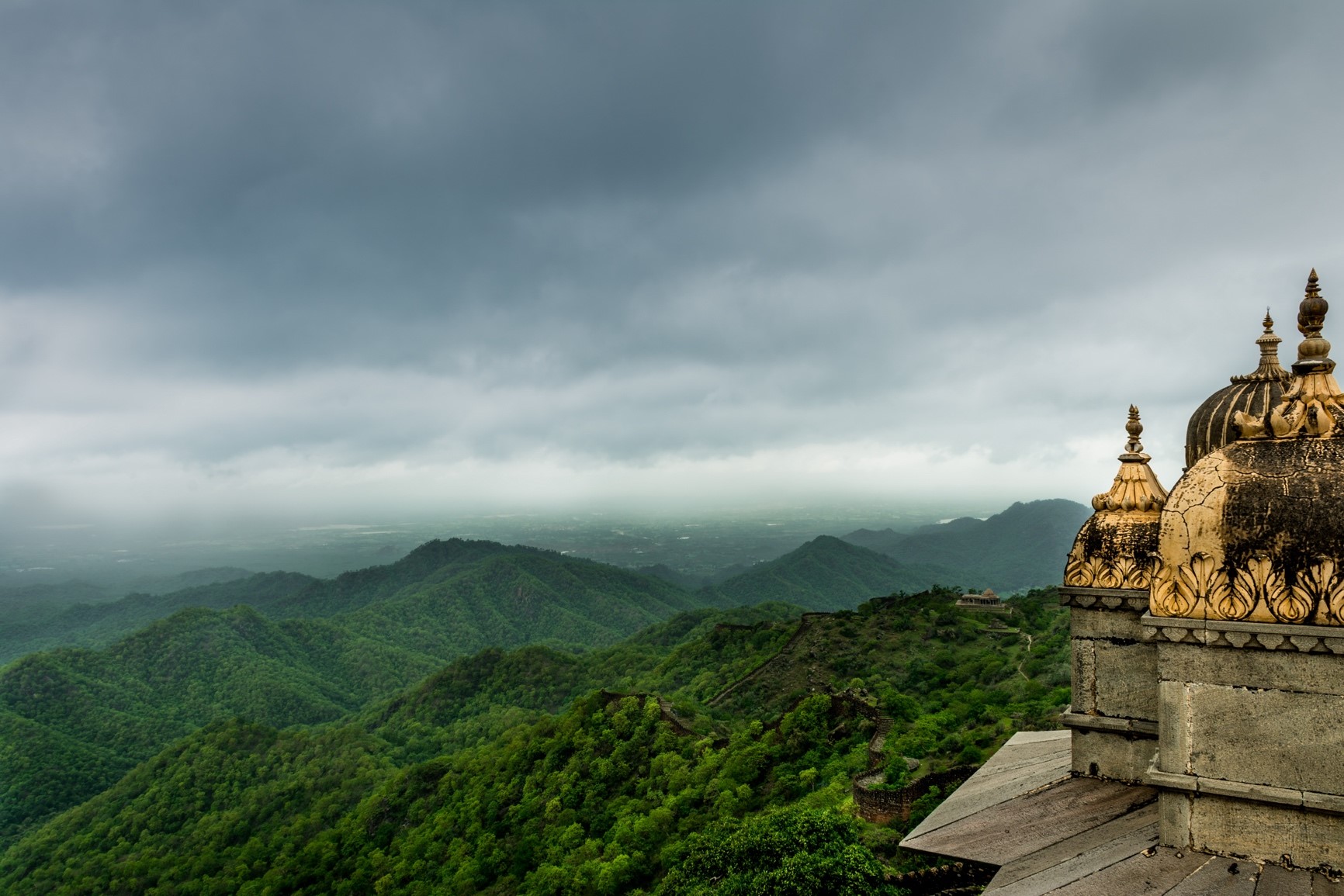Description

Disclaimer: Copyright infringement not intended.
Context
- The proposal to designate the Kumbhalgarh Wildlife Sanctuary (KWS) in Rajasthan as a tiger reserve has ignited a debate, raising concerns about indigenous communities, tiger presence, ecological impact, and the balance between conservation and local livelihoods.
Details
Indigenous Communities and Displacement Concerns
- Situated on the fringes of the Aravalli range, the KWS is inhabited by indigenous tribes such as Bhil, Garasia, and Raika pastoralists.
- These communities express apprehension about potential displacement due to the reserve's declaration, impacting their ancestral lands and traditional way of life.
- Threat to displacement of 20 tribal villages located inside KWS.
Tiger Presence and Connectivity
- One of the focal points of the controversy is the absence of documented tiger presence in the Kumbhalgarh forest.
- Experts and critics question the rationale behind establishing a tiger reserve where historical evidence of tiger populations is lacking.
- Not much prey to support tiger population.
- Furthermore, the lack of connectivity corridors to other tiger reserves raises concerns about genetic diversity and healthy tiger populations.
Ecotourism and Livelihood Impact
- Proponents of the tiger reserve argue that it could spur employment opportunities through ecotourism.
- However, opponents stress that potential benefits must be weighed against potential negative impacts on the livelihoods of indigenous communities.
- The declaration might lead to the displacement of traditional livelihoods and disrupt the equilibrium between conservation and human well-being.

Conservation and Human-Wildlife Conflict
- The KWS is known for its diverse fauna, including Indian wolves, four-horned antelope, and leopards.
- However, the area has never been part of any established tiger corridor.
- The presence of roads traversing the sanctuary raises concerns about human-wildlife conflicts, particularly if tiger populations were introduced without proper connectivity measures.
Complexity and Considerations
- The proposed tiger reserve highlights the intricate balance required between conservation and local communities' rights.
- Striking a balance between protecting biodiversity and respecting the livelihoods and traditions of indigenous tribes presents a complex challenge.
List of Tiger reserves in Rajasthan
- Mukandra Hills Tiger Reserve
- Ramgarh Vishdhari Tiger Reserve
- Ranthambore Tiger Reserve
- Sariska Tiger Reserve
Newly approved
- Dhoulpur-Karauli tiger reserve
- Kumbhalgarh tiger reserve (in-principal approval)
Kumbhalgarh Wildlife Sanctuary: A Precious Natural Haven
Location and Overview
- Situated in the Rajsamand District of Rajasthan, Kumbhalgarh Wildlife Sanctuary encompasses an area of 610.528 square kilometers, surrounding the awe-inspiring Kumbhalgarh fortress.
- The sanctuary is an exemplar of the rich natural diversity of western India.
- The landscape extends across the Aravalli Range, spanning parts of Rajsamand, Udaipur, and Pali districts, with elevations ranging from 500 to 1,300 meters.
- This sanctuary is a part of the Khathiar-Gir dry deciduous forests ecoregion, which adds to its ecological significance.
Geographical Features
- The sanctuary's nomenclature is derived from the remarkable Kumbhalgarh fort.
- Its territory comprises a core area spanning 224.890 square kilometers and a buffer area spanning 385.638 square kilometers.
- Notably, the sanctuary envelopes four hill and mountain ranges within the Aravalli: Kumbhalgarh range, Sadri range, Desuri range, and Bokhada range.
- Additionally, the sanctuary houses twenty-two villages.
- The terrain varies from hills to piedmont and plains. While plains have been adapted for agricultural activities, the sanctuary's charm resides in its diverse topography.
Flora and Fauna
- Kumbhalgarh Wildlife Sanctuary is home to a vibrant array of flora and fauna.
- Within its confines reside the Indian wolf, Indian leopard, sloth bear, striped hyena, golden jackal, jungle cat, sambhar, nilgai, chausingha, chinkara, and Indian hare.
- The elusive Indian leopard assumes the role of the sanctuary's apex predator, embodying the intricate balance of its ecosystem.
Avian Diversity
- The avian inhabitants of Kumbhalgarh Sanctuary are equally captivating.
- Among them, the grey junglefowl captures attention with its vibrant presence.
- The sanctuary's varied habitats provide a haven for numerous bird species, contributing to the area's ecological richness.
Ecological Significance
- This sanctuary is not merely a geographical entity; it symbolizes the commitment to conserving nature's wonders.
- Its encompassing of multiple ecosystems within the Aravalli Range speaks to its ecological relevance.
- The sanctuary's rich biodiversity and varied landscapes underscore its role in maintaining regional ecological balance.
Exploring the Richness of Kumbhalgarh
Historical Significance
- The Kumbhalgarh fortress, dating back to the 15th century, stands as a testament to Rajput valor and architectural brilliance.
- Built by Rana Kumbha, this fortress served as a refuge for the Mewar rulers during times of conflict.
- Its robust walls, spanning over 36 kilometers, make it one of the longest fortifications in the world.
Architectural Marvel
- The intricate design of the Kumbhalgarh fortress showcases the fusion of artistic prowess and defensive strategy.
- The fort's massive gates, intricate carvings, and bastions reflect the skill of artisans and engineers of its time.
- The Badal Mahal (Palace of Clouds) within the fortress adds a touch of elegance to its rugged grandeur.
Ranakpur Jain Temple
- Nearby, the Ranakpur Jain Temple stands as a pinnacle of architectural brilliance.
- Its intricate marble carvings and unique architecture make it a significant spiritual and cultural destination.

Conclusion
- The controversy surrounding the proposal to declare Kumbhalgarh Wildlife Sanctuary as a tiger reserve underscores the multi-dimensional nature of conservation efforts. A comprehensive and inclusive approach that involves scientific research, consultations with local communities, and sustainable development strategies is essential to navigate the complex web of interests, ensuring the well-being of both nature and people.
|
PRACTICE QUESTION
Q. Which of the following statements about Kumbhalgarh is/are correct?
1. The Kumbhalgarh fortress was constructed in the 15th century and is known for its lengthy fortifications.
2. Kumbhalgarh Wildlife Sanctuary is home to diverse wildlife, including species like Indian wolf and Indian leopard.
3. The Kumbhalgarh region includes the famous Ranakpur Jain Temple, showcasing intricate marble carvings.
Options:
A) Only Statement 1
B) Statements 1 and 2
C) Statements 2 and 3
D) All of the above
Answer: D)
|
https://www.newindianexpress.com/nation/2023/aug/25/new-kumbhalgarh-tiger-reserve-in-rajasthan-to-displace-indigenous-tribes-2608556.html












